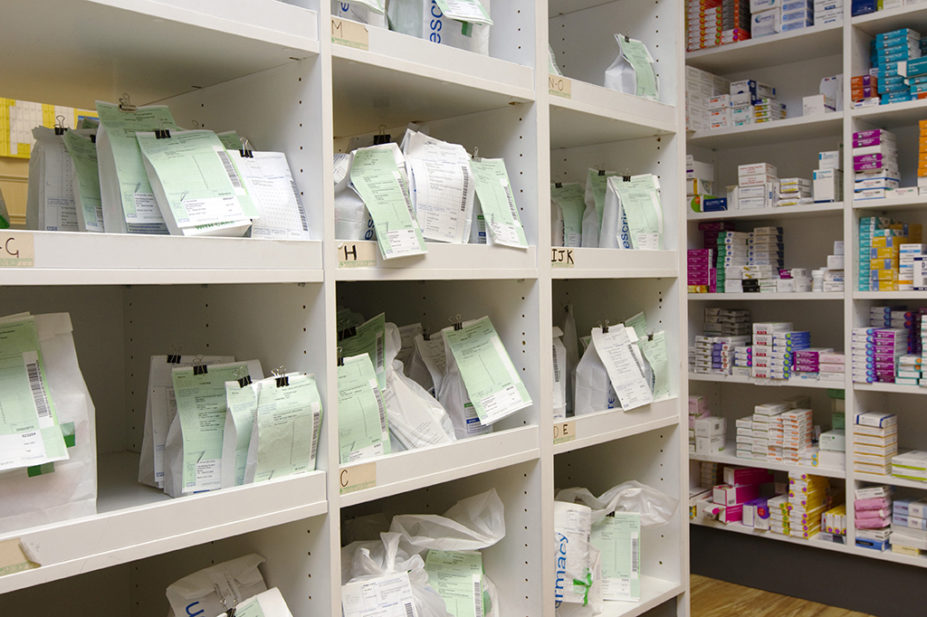
MARK THOMAS/SCIENCE PHOTO LIBRARY
There was a small drop in the profit that community pharmacies in England made on dispensing in 2021/2022, compared with the previous year, show government figures.
This is despite reports from pharmacy contractors that pharmacies are making “huge losses” through dispensing, owing to increasing medicine prices and issues with the price concessions system.
In September 2022, the Pharmaceutical Services Negotiating Committee (PSNC) said it was escalating its concerns to the government about the process for setting price concessions, after contractors reported that medicines could not be purchased at their reimbursement prices.
In response to a written question, asking the government for an estimation of the average gross profit margin for pharmacists on each prescription, Lord Markham, parliamentary under-secretary for health and social care, published data showing that, in 2021/2022, pharmacists dispensed 1,043,054,789 items and earned 89p in profit per item. This amounts to a total margin of £928,318,762 for the year.
This is a drop of 7p on the previous financial year (see Table).
Under the community pharmacy contractual framework, margin that is more than £800m is usually clawed back from pharmacies by adjusting drug tariff prices for Category M generic medicines. Following negotiations for the final two years of the five-year contract, the government agreed to write off £100m of excess margin by increasing generic drug tariff prices from October 2022.
However, community pharmacists have reported losing money on purchasing medicines above drug tariff prices.
Speaking at the Healthcare Distribution Association’s annual conference in London on 25 January 2023, Sanjeev Panesar, owner of Pan Healthcare — a group of five community pharmacies in Birmingham —called for “more consistent and reliable pricing”.
“I don’t know of any other business that procures blind and in the dark without knowing what they will be reimbursed,” he said. “Many pharmacies are making losses on supplies of medicines that are above the drug tariff reimbursement value.
“Even if a medicine is added on to the price concession list, prescriptions can only be submitted for reimbursement once the patient collects their medication. If the patient collects the medication the month after a price concession is permitted, the pharmacy may still make huge losses.”
Gareth Jones, director of corporate affairs at the National Pharmacy Association, said: “The system of averaging out retained margin discriminates against smaller independents, who cannot spread risk across a large estate.
“A global figure of £800m has no meaning for a contractor paying above the odds, buying blind and not properly compensated by the NHS for the expenditure.”
In December 2022, the government agreed to 198 product price concessions — the highest on UK record — in an indication of severe medicines shortages and increased supply prices across the UK.
“Contractors across the country are facing severe financial pressures due to a growing and unsustainable decline in funding in real terms,” said Mike Dent, director of pharmacy funding at the PSNC.
“We have said clearly to ministers, the NHS and government officials that the current pharmacy funding settlement is unfit for purpose, due to the spiralling and uncontrollable cost increases that have been experienced by pharmacy contractors in the last three years.
“Pharmacy businesses, and the services they provide for patients, are now significantly at risk. We have stated that an immediate injection of at least £500m is required, just to maintain the pharmacy service in its current form.”
The PSNC urged pharmacy contractors to contact their MPs in December 2022 to highlight the funding crisis facing the sector, calling for additional funding, an end to the recruitment of pharmacists into primary care networks and “a more effective price concessions/reimbursement system”.
2 comments
You must be logged in to post a comment.



Even if the margin per pack calculated is correct (which I highly doubt), the government have not taken into account the spiraling costs of staff, utilities, fuel etc. More smoke & mirrors from this tory cabal.
OK, we are supposed to accept this tosh from an organisation that will not disclose the information it relies on in setting concession prices? Many concession prices are announced having been imposed. That means despite objections from PSNC and evidence from PSNC to the contrary.
We cannot believe a word these people say and that has been the case for 6 years. It really is time they were called out by PSNC.
“Profit”? Gross or net? Justify your findings.